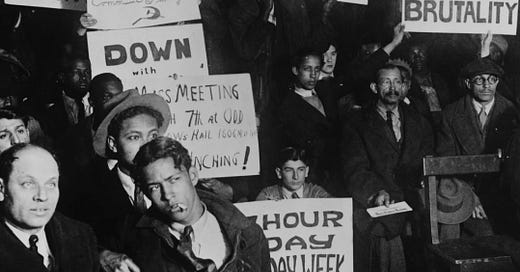Introduction
The rise of fascism in Europe, particularly in Nazi Germany, is one of the most studied and troubling periods in modern history. Understanding how Adolf Hitler and the Nazi Party came to power is crucial—not just for historical insight but also for preventing similar ideologies from resurfacing today. In this article, we’ll examine the conditions that allowed fascism to thrive in Germany, the role of Hitler, and the broader societal factors, particularly the failures of democratic institutions, that contributed to the collapse of democracy. We’ll explore key questions: How did fascism gain traction in Germany? What conditions enabled Hitler’s rise? And what lessons can we learn from this dark chapter in history?
1. The Aftermath of World War I and the Treaty of Versailles
Germany’s defeat in World War I and the Treaty of Versailles left the nation in chaos. The treaty imposed harsh reparations, territorial losses, and military restrictions, which many Germans saw as a national humiliation. The Weimar Republic, established in 1919, struggled with hyperinflation, unemployment, and widespread discontent. These dire conditions created fertile ground for extremist ideologies, as many sought radical solutions to their suffering.
2. The Rise of Fascism in Europe
Fascism emerged in response to the perceived failures of democracy and the threat of communism. In Italy, Benito Mussolini’s regime inspired similar movements across Europe, including in Germany. Fascism appealed to those disillusioned with democratic governments, promising order, strength, and national revival. In Germany, Adolf Hitler and the Nazi Party became powerful advocates of this ideology.
3. Adolf Hitler and the Nazi Party
Hitler, a veteran of World War I, entered politics in the early 1920s by joining the National Socialist German Workers' Party, or Nazi Party. The party’s core ideologies included anti-Semitism, Aryan supremacy, and a rejection of the Treaty of Versailles. Hitler’s charismatic leadership and skillful use of propaganda helped the party attract supporters eager for a return to national greatness and relief from economic hardships.
4. The Path to Power
The late 1920s and early 1930s were marked by severe economic crises, particularly the Great Depression, which destabilized Germany further. The Nazis capitalized on this turmoil through propaganda and political maneuvering. However, the behavior of the Democratic parties significantly contributed to Hitler’s rise.
Fragmentation of the Political Landscape: The Weimar Republic’s system led to a fragmented parliament, with many parties unable to form stable coalitions. This instability weakened the government and made it difficult to address the nation’s crises effectively.
Inadequate Response from Democratic Parties: The Social Democrats and other democratic factions failed to connect with the public's needs. Their internal divisions and inability to present a united front left many voters feeling unheard and disenfranchised.
Underestimation of the Nazi Threat: Moderate parties underestimated Hitler, thinking they could control him to suppress communism. This miscalculation allowed the Nazis to gain power and manipulate the political landscape to their advantage.
5. Consolidation of Power
Once in power, Hitler quickly moved to consolidate control. The Reichstag Fire in February 1933 provided a pretext for the Reichstag Fire Decree, which suspended civil liberties and allowed the Nazis to suppress opposition. The Enabling Act of March 1933 granted Hitler dictatorial powers, effectively ending democracy in Germany. The Nazis eliminated political opposition, banned other parties, and executed the Night of the Long Knives in 1934 to purge dissent.
6. The Role of Propaganda and Terror
The Nazi regime relied heavily on propaganda and terror to maintain control. Joseph Goebbels, the Minister of Propaganda, orchestrated campaigns to glorify Hitler and promote Nazi ideology. Meanwhile, the Gestapo and concentration camps were used to suppress dissent and enforce loyalty. Fear and manipulation became central tools of the regime, ensuring widespread compliance.
7. The Broader Context: Why Did Germans Support Hitler?
Many Germans supported Hitler for various reasons. Economic desperation made his promises of recovery appealing, while nationalist sentiments fueled a desire to restore Germany’s greatness. Fear of communism and the appeal of a strong leader also played significant roles. Additionally, anti-Semitism and scapegoating Jews resonated with a population searching for explanations for their hardships.
8. The Consequences of Hitler’s Rise
Hitler’s rise to power had catastrophic consequences. The establishment of a totalitarian state led to the persecution of Jews, Roma, LGBTQ+ individuals, political dissidents, and other marginalized groups. The Nazi regime’s aggressive expansionist policies ultimately led to World War II, and its genocidal actions resulted in the Holocaust, one of the darkest chapters in human history.
Conclusion
The rise of fascism in Nazi Germany serves as a stark reminder of the dangers of authoritarianism and the erosion of democratic institutions. By understanding the conditions that allowed Hitler to rise, especially the failures of the Democratic parties to listen to the people, we can better recognize and resist similar threats today. Educating future generations about this history is essential to ensure that such atrocities are never repeated. Vigilance, empathy, and a commitment to justice remain our strongest tools in the fight against tyranny.
References
Broszat, M. (1981). The Hitler State: The Foundation and Development of the Internal Structure of the Third Reich. Longman.
Evans, R. J. (2003). The Coming of the Third Reich. Penguin Books.
Hilberg, R. (1985). The Destruction of the European Jews. Yale University Press.
Kershaw, I. (1998). Hitler: 1889–1936: Hubris. W.W. Norton & Company.
Kokayi Noksakhere (2024). Lessons and Organizing from the Montgomery Bus Boycotts. Class. Zoom.
Payne, S. G. (1995). A History of Fascism, 1914–1945. University of Wisconsin Press.
Welch, D. (1993). The Third Reich: Politics and Propaganda. Routledge
Photo by Hirz/Archive Photos/Getty Images






